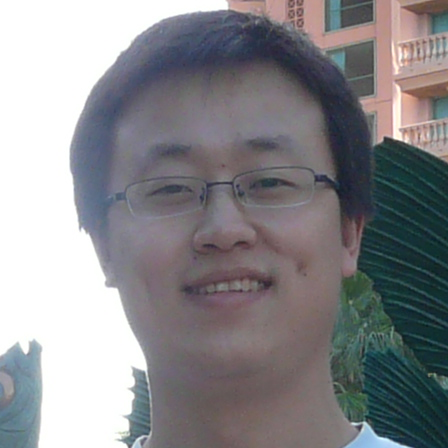RNA Structural Comparison

Shihyen Chen
RNA is an important molecule that performs a wide range of functions in biological systems. RNA has recently become the center of much attention due to its catalytic properties which lead to an increasing interest in obtaining its structural information. In many biological problems involving RNA, it is required to compare the structures of the molecules. The presumption is that, to a preserved biological function there corresponds a preserved molecular structure.
Therefore, discovering structural similarity can help reveal valuable information regarding biological functions. As such, the ability of comparing RNA structures is of fundamental importance in many research tasks involving RNA molecules.
In this tutorial, we discuss various scenarios for RNA structural comparison. We show the encoding methods for RNA structures and the algorithms for computing structural similarity based on the encoding.
Bio:Shihyen Chen is currently a research assistant at the University of Western Ontario. He originally studied chemistry and received a Ph.D. from the University of Memphis in 1996. He then became a postdoctoral fellow at UWO. As his work in chemistry involved calculations of molecular properties through the use of computers, he became increasingly drawn to the inner workings of the computer technology and the principles of computing. This interest lead him to take a comprehensive series of courses in computer science at UWO. He found the study very fulfilling and decided to make a full transition to the discipline by doing graduate research in computer science. He subsequently completed an M.S. in 2003 and a Ph.D. in 2008, both at UWO. His recent research is related to combinatorial algorithms concerning various types of matching problems for sequences, trees, and RNA structures where computational biology has been a major source of motivation.
Protein Structure Prediction

Xin Gao
Proteins are the basic building block of our body. A protein is a linear chain of amino acids and usually folds into a unique 3D structure in nature. Discovering the 3D structure of a protein can provide important clues about how the protein performs its function. This tutorial will focus on computational methods on protein structure prediction, one of the most challenging unsolved problems in bioinformatics.
Protein structure prediction has been studied for more than thirty years. Current protein structure prediction methods can be categorized as either template-based modeling or template-free modeling. This tutorial will cover both categories, such as homology modeling and threading in template-based modeling, and force field-based search and fragment assembly in template-free modeling, with focus on the algorithmic and modeling points of view. Meanwhile, some important protein structure data sources, programs, and events will be introduced, such as Protein Data Bank, SCOP database, BLAST package, HHPred, RAPTOR, PsiPred, SCRWL, and CASP competition, so that the audience will have a sense of the state-of-the-art on protein structure prediction and will be able to start doing some preliminary studies. Furthermore, experimental data-based protein structure determination will be discussed, with focus on nuclear magnetic resonance data-based structure determination and speaker’s work in this area.
Bio:Dr. Xin Gao received his Bachelor of Science degree from the Computer Science and Technology Department at Tsinghua University, China in 2004, and his Ph.D. degree from David R. Cheriton School of Computer Science at the University of Waterloo in 2009, under the supervision of Prof. Ming Li and Prof. Jinbo Xu. He is now a Lane Fellow in Lane Center for Computational Biology in School of Computer Science at Carnegie Mellon University. His research interests are in the area of bioinformatics, computational biology, machine learning, and algorithms, particularly in designing highly efficient and error tolerant systems to solve grand biological problems in structural biology area, and developing machine learning approaches to model complex biological systems in system biology area.
Imaging in Practice: Comparing the Applications of X-ray CT, US, and MRI Modalities.

Mehdi Moradi
This tutuorial will be a crash course on three imaging modalities (X-ray CT, US, and MRI). The nature of the course will be skill-oriented. In CT, a practical example of back-projection image reconstruction will be given. With ultrasound, it will be demonstrated how to practically go from RF signals to images. Finally, in MRI, the function of the three magnets will be reviewed, and a couple of practical examples of the gradient fields and how they work will be given. To conclude, we will compare the modalites in terms of spatial resolution, cost, SNR, safety and convenience of use.
Bio:Mehdi Moradi received the B.S. degree in biomedical engineering from Tehran Polytechnic, Tehran, Iran, in 2000, theM.Sc. degree in biomedical engineering from the University of Tehran, Tehran, in 2003, and the Ph.D. degree in biomedical computing from Queen’s University, Kingston, ON, Canada, in 2008. He currently holds an NSERC Postdoctoral Fellowship in the Department of Electrical and Computer Engineering, University of British Columbia and also serves as a lecturer of biomedical engineering at Simon Fraser University. His current research interests include ultrasound imaging and tissue characterization, elastography, image registration and segmentation, and pattern recognition.
